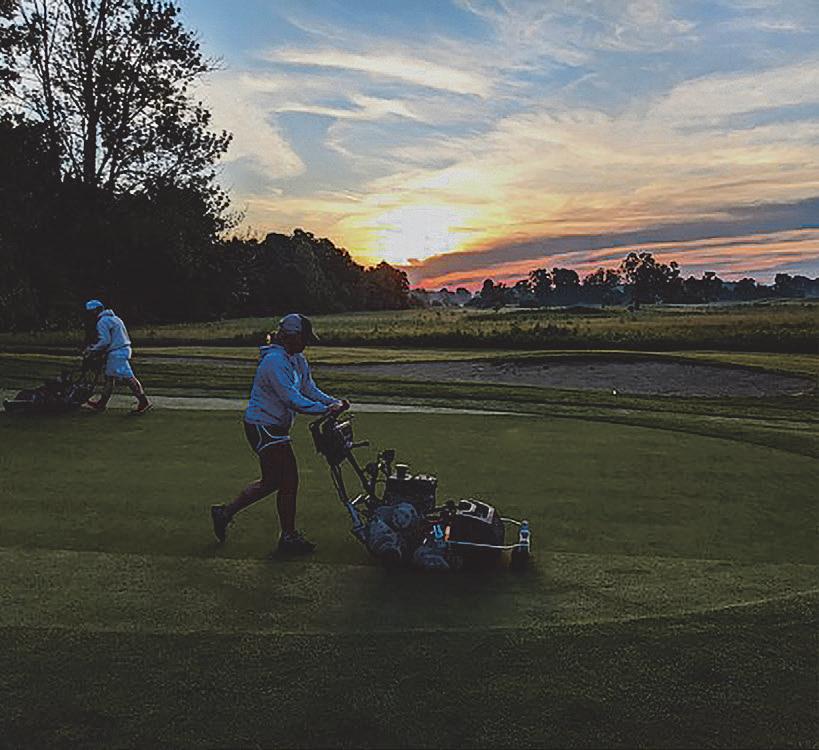
13 minute read
Cover Story
Women in the Green Industry: An Emerging Labor Force
By Devon Carroll, Plant, Soil, and Environmental Science Ph.D. candidate, The University of Tennessee and Dr. Carrie Stephens, Professor of Leadership in the Department of Agricultural Leadership, Education and Communications, The University of Tennessee
Advertisement
WOMEN’S WORK
A look at most grounds crews at athletic facilities, golf courses, or landscape operations rarely reveals a woman working to maintain green spaces. Despite women comprising 51% of the U.S. population and 47% of the labor force, women represent far less than half of the labor force in the turfgrass or landscape industries. Given that turfgrass and landscape industries are estimated to support about 1.4 million jobs nation-wide, this labor group represents novel employment opportunities. Although female groundskeepers and landscape professionals have recently gained attention in media, their numbers are few. National turfgrass associations report only 2 to 4% of members who are female (Figure 1). Similarly, the United States Bureau of Labor Statistics reported that as of 2019, women comprised only 6.5% of all landscaping and groundskeeping workers.
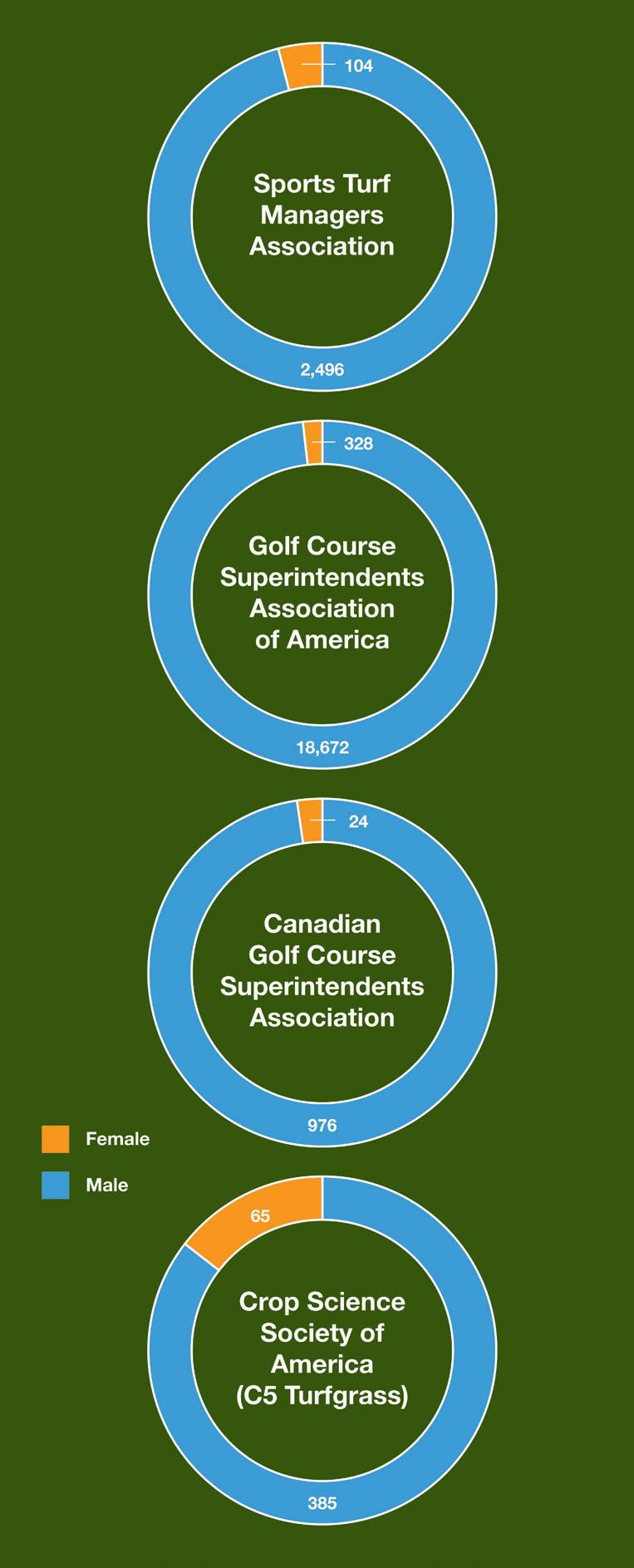
FIGURE 1. Estimated female membership in national turfgrass associations provided through personal communication in February 2020.
The low percentage of women working in the turfgrass or landscaping industry classifies such work as a non-traditional job. Nontraditional jobs are classified by the United States Department of Labor as an occupation that is comprised of 25% or less female employment. Other non-traditional labor sectors with similar percentages of female employment to turfgrass and landscaping include welding, construction, plumbing, and electricians (2.2 to 5.3% women). The low engagement of women in the green industry is a problem as labor is of growing concern. In recent years, a decline in the U.S. unemployment rate and immigrant and bluecollar worker availability has affected hiring across many professions. In the past eighteen months, the labor issue has been exacerbated by the compounding effects of COVID-19. As the industry struggles to fill positions, recognizing the under-utilization of women could be a solution. Can increased recruitment of women to the green industry help close the labor gap?
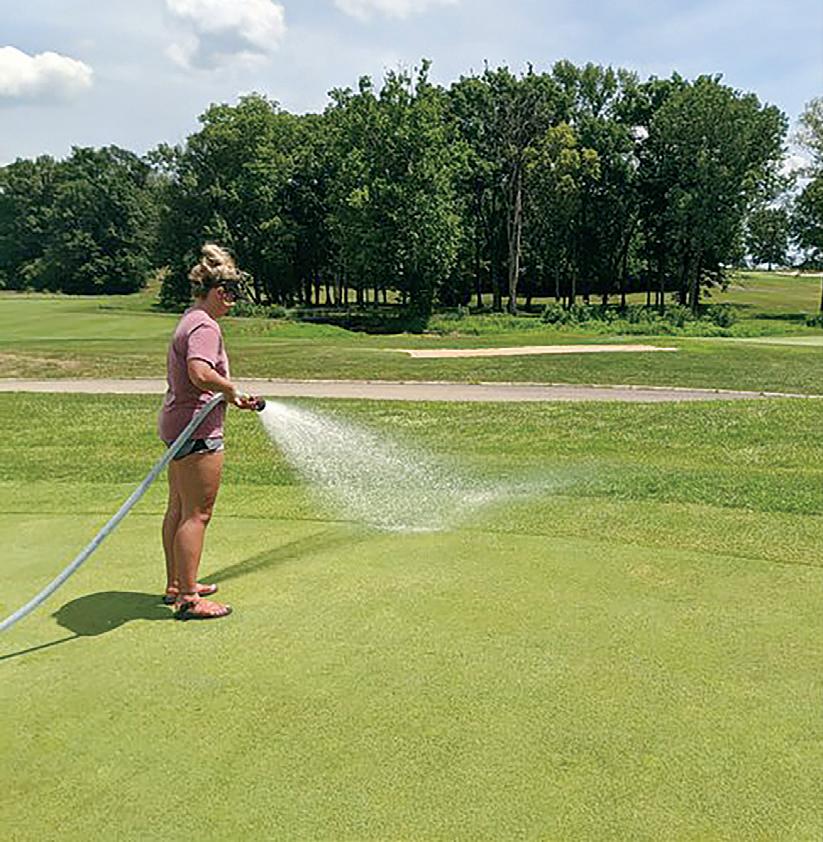
IMAGE 1. Otter Creek Golf Course in Columbus, IN, has found that female high school students like Kaitlyn Dougherty (pictured) are extremely capable grounds crew employees and actively seeks to recruit other women to the team.
Photo by Brent Downs
Imagine if the percentage of women working in landscape related professions rose from 6.5% to 10%. Based on current estimations by the United States Bureau of Labor Statistics, this relatively small increase would result in an additional 50,000 women seeking employment in the green industry. Now imagine if the percentage changed to 20 or 30% women.
In recent years, the green industry has worked to create space for women by developing programs such as the Women in Landscape Network, Ladies Leading Turf sponsored by Syngenta, Women in Golf sponsored by Bayer Environmental Science, and “Women in Turf” events held at industry association meetings. Continuing these efforts and refining recruitment methods to attract women to the industry could ease labor concerns and result in a more diverse workforce. Barriers faced uniquely by women may be limiting the number of women entering and remaining in the industry. In other agricultural fields, research has identified challenges and opportunities for women as a means of increasing their recruitment. This information is of value to the turfgrass and landscape industries as a resource for improving recruitment and retention strategies for women and to ease labor concerns.
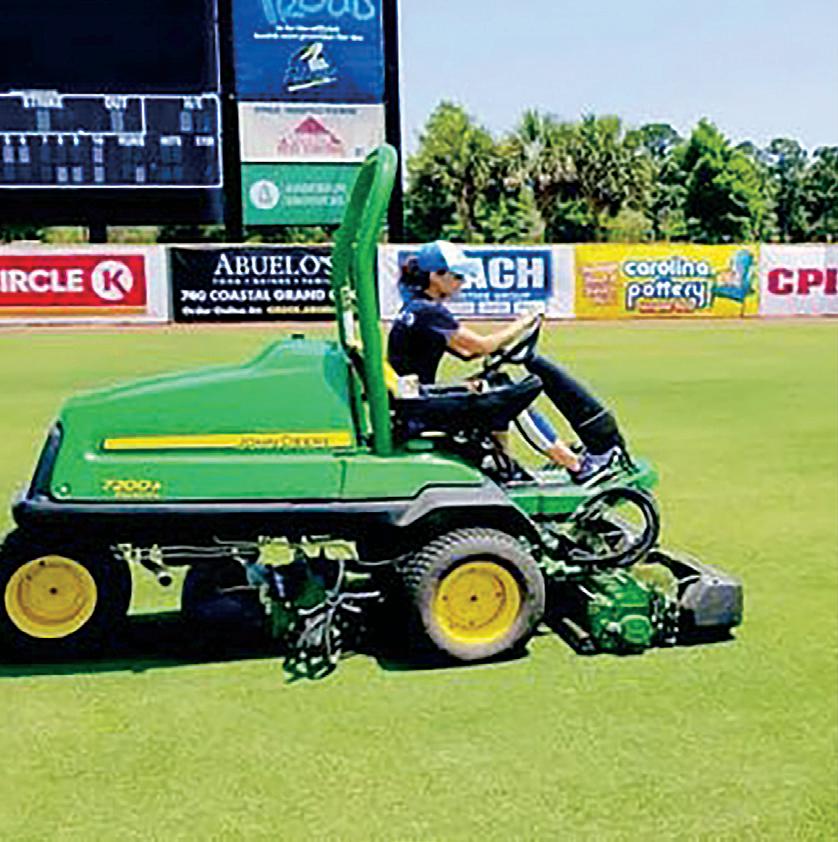
IMAGE 2. Growing up on a farm in Alabama helped prepare Tisa Blackhurst for her current role as assistant sports turf manager for the Myrtle Beach Pelicans (S.C.) minor league
Photo by J.C. Blackhurst
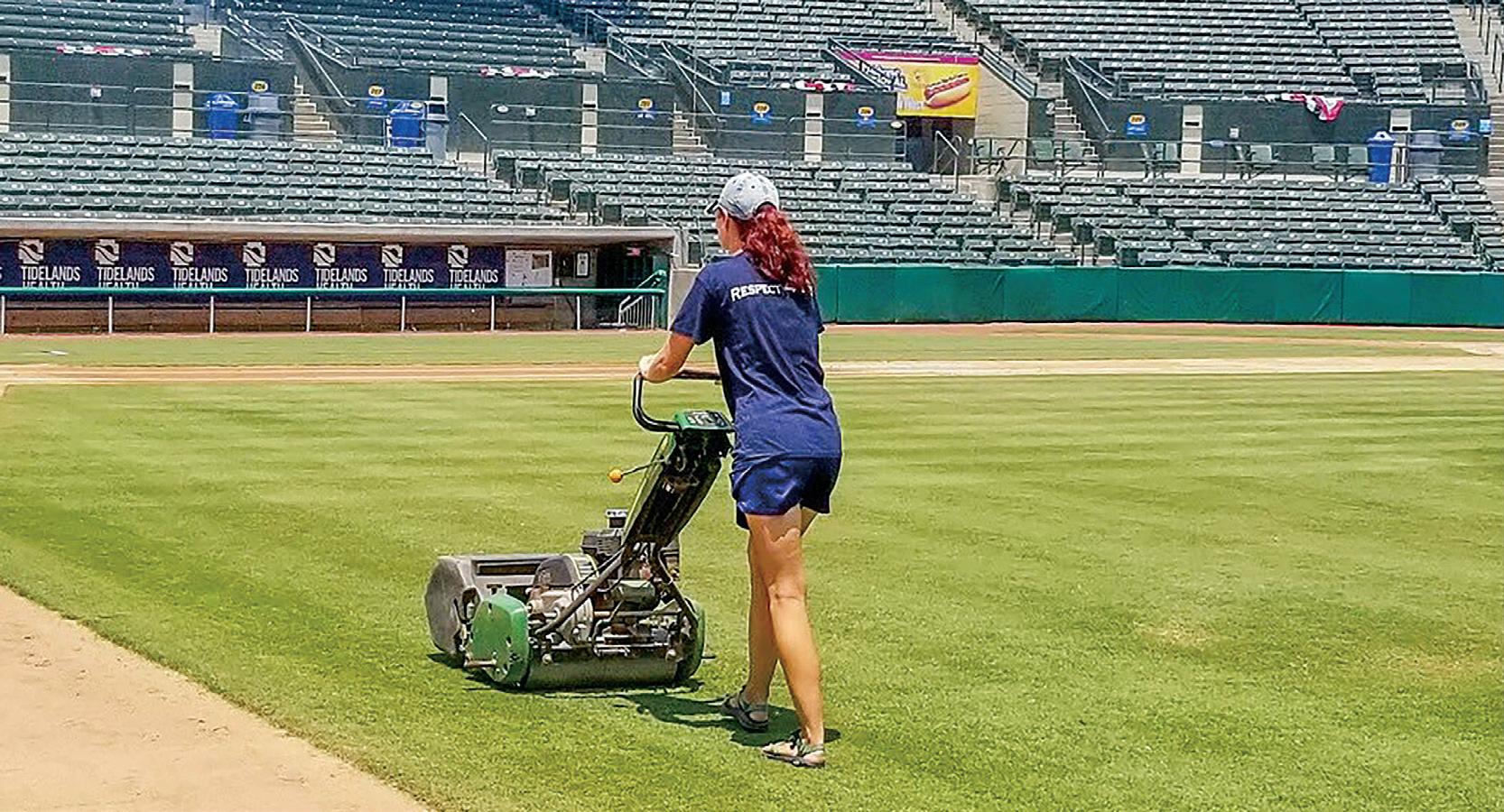
IMAGE 3. Tisa Blackhurst exemplifies women who are vibrant leaders in the turf industry. As assistant sports turf manager for the Myrtle Beach Pelicans, Tisa prepares the field ahead of a baseball game.
Photo by J.C. Blackhurst
FEMALE EXPERIENCES IN TURFGRASS
Researchers at the University of Tennessee in the Department of Agricultural Leadership, Education and Communications took a scientific approach to determine barriers and opportunities for women in the turfgrass industry by interviewing female leaders to explore their lived experiences. Thirteen female leaders participated in the study and represented diverse backgrounds of 6 to 30+ years of experience working in turfgrass; geographic locations in three countries and comprised of nine U.S. states and three Canadian provinces; and job titles including athletic field manager, assistant athletic field manager, graduate student, golf course superintendent, and assistant golf course superintendent. Five of the women work in sports turf and eight in golf turf. Female leaders participated in 30-to-90-minute interviews conducted remotely via Zoom. Interviews were semi-structured and posed the central research question, “What lived experiences have shaped your career in the turfgrass industry?” Transcriptions of interviews were used to develop themes intended to encompass the experiences and views of all thirteen participating women. Responses from female leaders established themes of leadership styles, mentorship opportunities, and challenges.
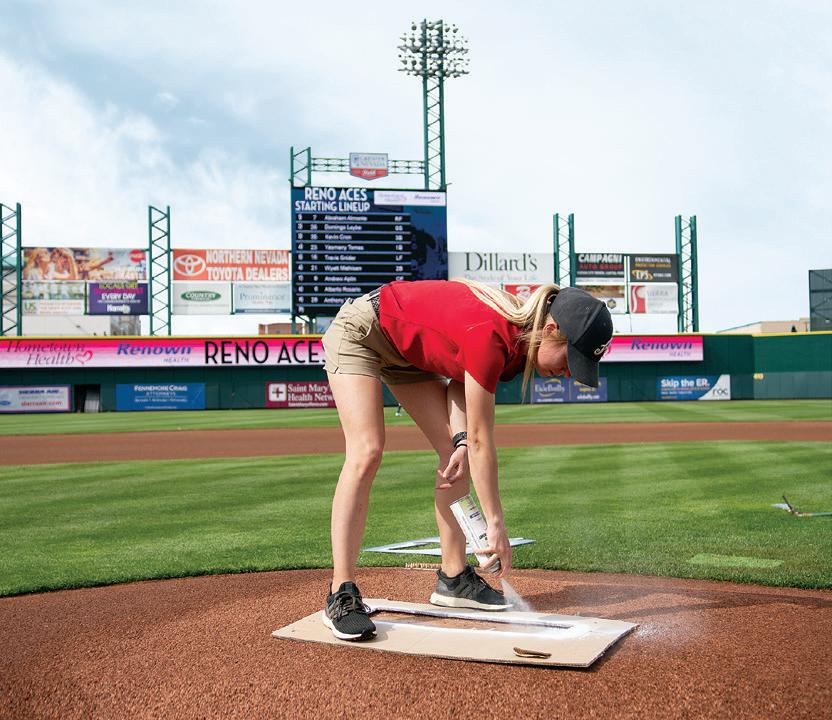
IMAGE 4. A vibrant leader in the turfgrass industry, Leah Withrow works as head groundskeeper for the Reno Aces baseball team and prepares the field before a game. Leah is the only female head groundskeeper in all of Triple-A baseball.
LEADERSHIP, MENTORSHIP, & CHALLENGES
Despite their diverse backgrounds, women interviewed in this study had similar childhood upbringings and influences on their career choices. Women described their childhoods as involving time spent outdoors through farming, playing sports, and engaging in other outdoor activities such as hiking, hunting, or fishing. These activities were noted to stimulate choices to work in an outdoor, hands-on environment later in life. Additionally, all of the women placed emphasis on the importance of education in their journeys to leadership. Twelve of the participants hold degrees in turfgrass or closely related fields. These women believed that their education was essential to their ability to garner respect and grow within the industry.
Women also expressed that their leadership styles were key components to successful professional development. The most common self-identified leadership style among participants was open leadership, which empowers employees to find their own way. Open leadership encompasses hands-on leading with an emphasis on communication, relationship building, and teaching. Women engaging in this leadership approach believe that this leadership style provides an opportunity for employees to understand why tasks are completed and permits employees to learn from failure. One participant stated, “[I try to] let everybody see what [the job is] really like, because they’re eventually, hopefully, going to take over my position one day.”
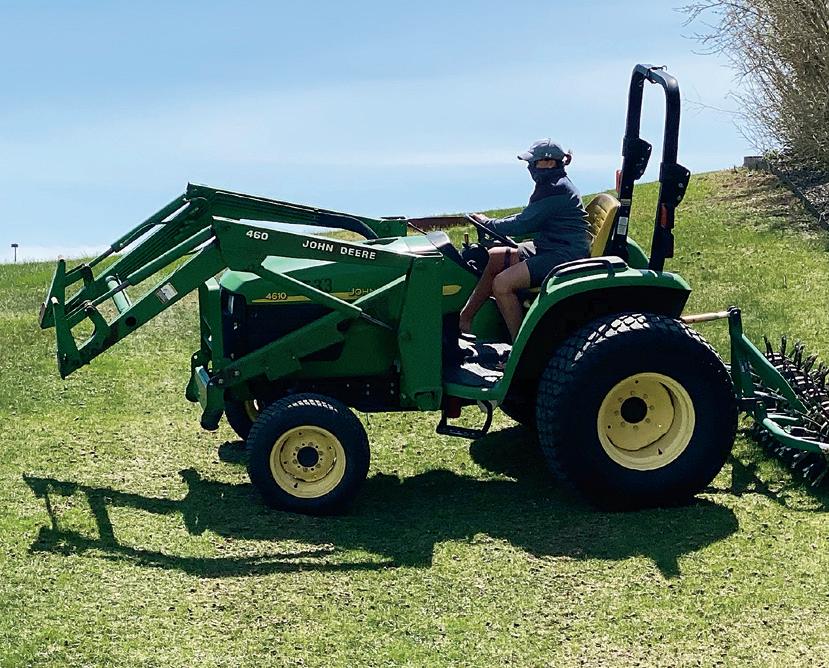
IMAGE 5. Sun Roesslein, stadium manager at the North Area Athletic Complex near Golden, CO, operates a tractor equipped with aeration equipment to maintain surrounding property.
Women using the open leadership style described the importance of working alongside their crews in order to prove themselves and build connections. Participants in this study believed their leadership styles differed from those common to male counterparts primarily due to their focus on communication and the emotional aspects of leadership such as keeping staff happy. Female leaders engaging in open leadership experienced positive responses from employees and felt this leadership style aided in their leadership success.
Interviewed women also commented on the significance of mentorship in their own journeys to leadership, as well as their desire to mentor others: “If you invest in people, they will start to invest in you.” When asked what makes a mentor relationship good, respondents indicated that successful mentorship takes time to foster. One contributor commented, “I think a good mentor is just somebody that’s there to understand you and to make you the best [version of] you, not make you the best [version of] them.” Similarly, another shared, “I think successful mentorship looks like somebody giving somebody else a chance no matter what.” This desire to build relationships aligns with tenets of open leadership common to women in the industry.
Although women in leadership roles in turfgrass were generally positive about their professional experiences, study participants also reflected on challenges that they perceived to be unique to women. Most of the issues described involved sexism, difficulty building a family, and inappropriate peer conduct. Women in the turfgrass industry described their frustration about being mistaken on the job as someone’s significant other or a waitress, instead of being recognized as a turfgrass manager at conferences and at work. “I struggled a lot because I was so tired of being mistaken for somebody’s wife. Being asked whose wife I was or whose fiancée I was, girlfriend I was, was a punch to the gut every single time. I’m not here with a man. I’m here because I work here,” said one of the women who volunteered for the study. Women also expressed their discomfort in being pursued romantically at conferences, work, and on social media. Many participants felt women had to work harder on the job to prove themselves: “The second golf course superintendent I worked for sat me down one day, and he said, ‘If you want to get into turf, there are some things that I think you need to accept and not necessarily like going into this field. You’re going to have to do it better, be smarter, be more savvy and be thickerskinned just to get the same respect that the guys get just walking in the door.’” Interviewees were hopeful sharing these experiences would provide comfort to other women in similar situations and bring light to the need for change in the current industry culture.
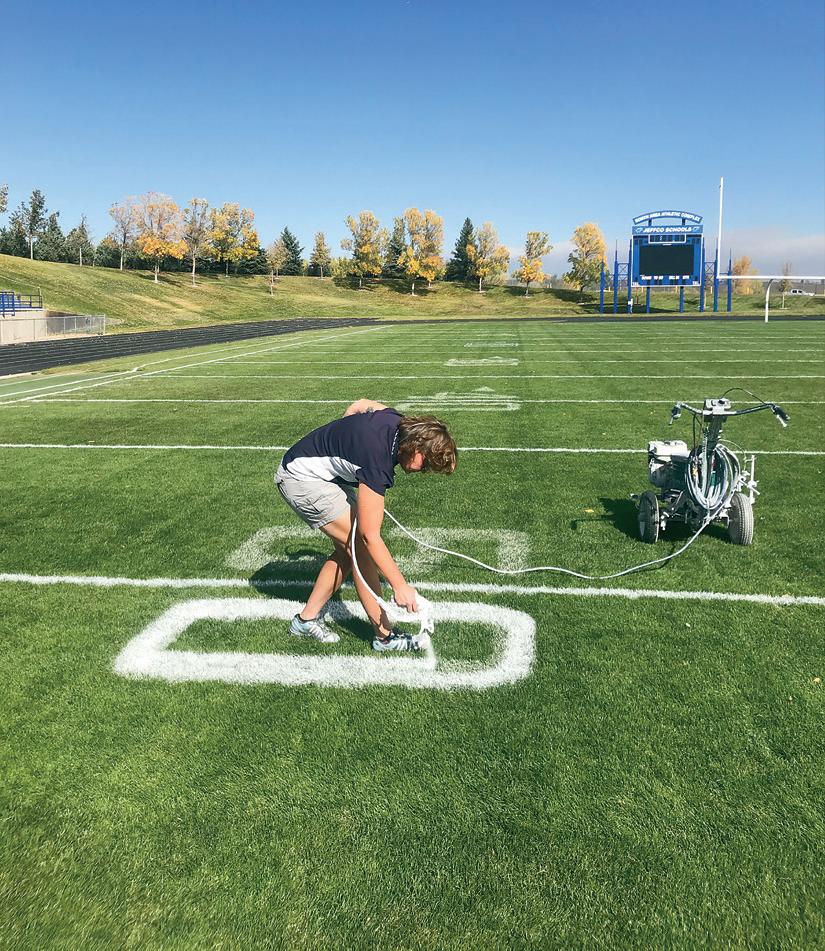
IMAGE 6. Near Golden CO, stadium manager Sun Roesslein paints yard line numbers in preparation for a football game.
OPPORTUNITIES FOR GROWTH
Understanding the journeys to leadership of women currently working in turfgrass can inform recruitment efforts seeking to involve women who may have a predisposition to find work in turfgrass interesting and rewarding. Additionally, open and honest discussion about the challenges faced by women in the turfgrass industry has helped to highlight opportunities for growth and identify the need for industry action toward change. Study participants indicated that females working in turfgrass and the industry itself can take steps to improve the experiences of current and future women workers.
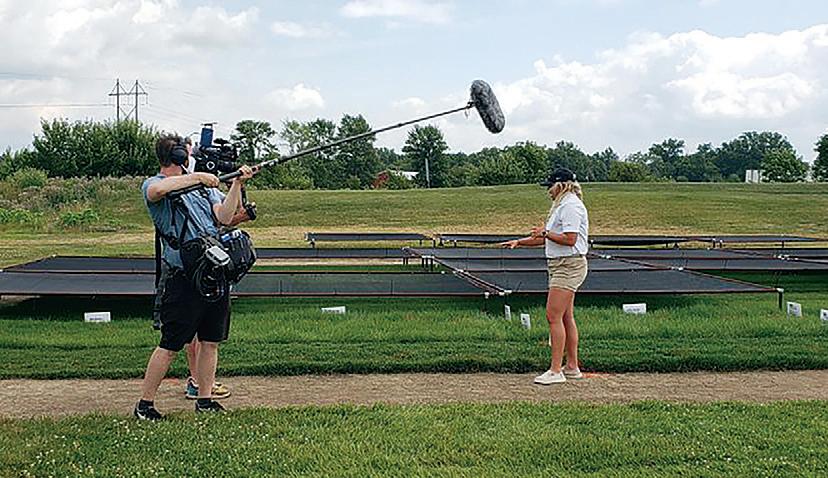
IMAGE 7. Cassie Reed is now a turfgrass specialist at The Scotts Co. and participates in a company video shoot in which she discusses shade research she carried out for her master’s degree at Ohio State University. Photo by Matthew Koch
Women can build space for themselves in the industry both personally and professionally. Emphasis was placed on the need for women in turfgrass to build comradery with other women to overcome challenges. One woman expressed her desire for support: “I need some kind of camaraderie from my fellow females in this industry. Tell me, how do you move on from challenges? They can’t answer that question for me, but it’d be nice to know, ‘Hey, I was there too before. This happened to me, so you’re not alone.’ Just that feeling.”
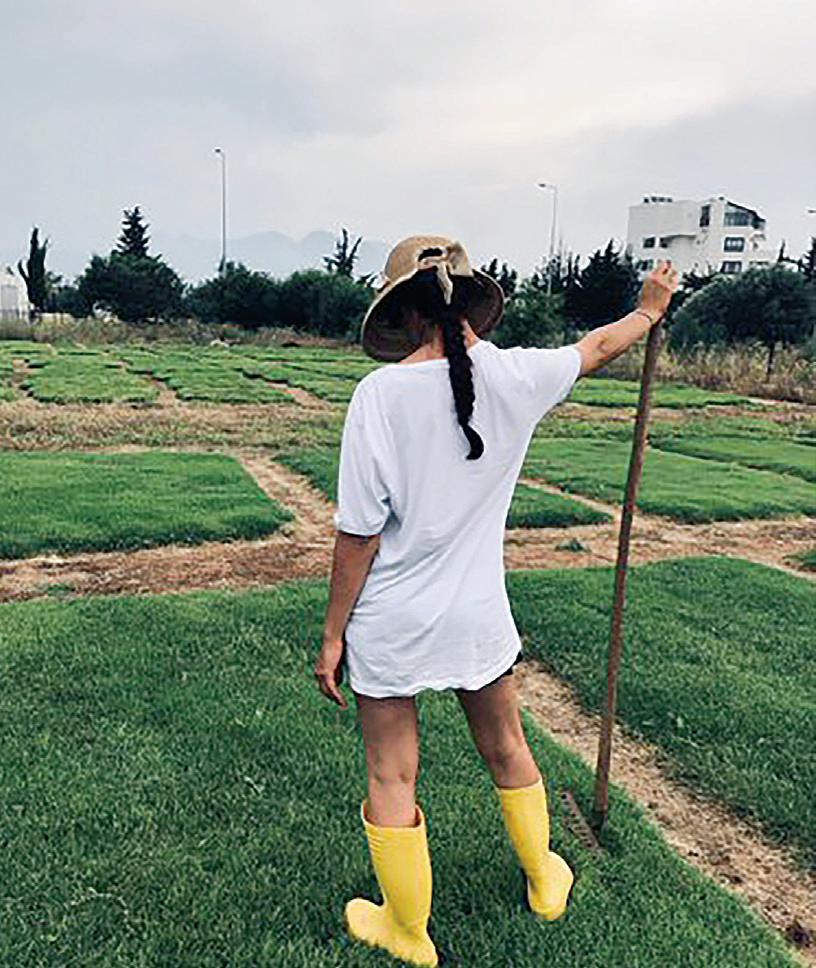
IMAGE 8. Graduate student Deniz Subasi is focusing on zoysiagrass breeding for her master’s degree at Akdeniz University in Antalya, Turkey. Photo courtesy of Deniz Subasi
Many women noted other women in the industry they met through Women in Turf events serve as their support in tough times: “Right now, because of the women-in-turf events, I’ve had the absolute privilege of meeting a group of amazing women who support each other and are always there to ask questions or bounce ideas off! Between Twitter, texting and WhatsApp, we’ve been able to stay pretty connected!” Similarly, another woman commented, “It’s definitely given us a platform — not saying that we’re special, but sometimes the women just need to talk to other women.” Such relationship-building and networking with other women can foster a stronger community of belonging.
Women were also encouraged to work on maintaining a positive mindset, recognizing and improving strengths and weaknesses, and pursuing opportunities. For example, women can enhance their visibility and leadership skills by serving on local or national association boards. Additionally, attendance at educational and Women in Turf events can offer women networking, mentorship, and professional development experiences.
Interviewed women described that the industry can support women by continuing to fund these events and through encouraging female counterparts to participate. Study participants described such events as essential to fostering a spirit of community and initiating change. Women also discussed change can occur if men in the industry provide and increase support through acceptance, mentorship, and advocacy. Many women relied on male friends and mentors on their journeys to leadership. Women were hopeful more men would fill these roles by speaking out when misconduct is observed, encouraging women to pursue growth, and believing in their abilities.
CHANGING LABOR DYNAMICS
Results of this study revealed women in turfgrass are successful leaders. The experiences communicated by interviewed women can be used to shape future female recruitment. Although these findings and recommendations are specific to women working in golf and sports turf, women working across the green industry in roles such as landscaping, sod farming, and nursery production likely face similar challenges and would benefit from changes to workplace dynamics and women-centric recruiting.
While twelve women in this study had turfgrass degrees, ten of the twelve started in careers other than turf. This finding indicates few women are entering the industry immediately after high school. In order to increase recruitment, women need to be informed of opportunities in the turfgrass industry in middle and early high school to promote turfgrass as an immediate career. Given that all thirteen women in this study described their upbringing as one involving outdoor activities, focusing recruiting efforts on students who play sports or are involved in agriculture will likely yield greater interest in turfgrass. Increasing female visibility on grounds crews and through social media may also foster interest by showing young females that career opportunities in the green industry are possible and rewarding for women.

IMAGE 9. Now a student in biomedical engineering at Purdue University, Kaitlyn Dougherty was one of three high school seniors who proved their capabilities as members of the grounds crew at Otter Creek Golf Course in Columbus, Ind.
In order to retain women currently working in turfgrass, the industry should continue to create space for women. Mentorship provided individually or through formal mentoring programs is needed and was found to promote professional development and leadership growth. The development of mentor programs for high school students may increase interest in green industry jobs for young women while offering a form of personal fulfillment for women already in the industry.
All 13 of the women interviewed for this project were passionate about their profession and enthusiastic about encouraging others to take on the challenge. Some women suggested that newcomers considering a career in turf should “expect the challenges” and “be strong, confident and yourself.” When asked to give a piece of advice to other women already in or contemplating entering the industry, the women echoed sentiments similar to “Just do it.” One woman said, “Any woman entering this industry at this time is going to be a trendsetter, right? You are blazing a trail for young women to follow you. And part of the challenge of being a trailblazer is that there are uncomfortable situations. And you have to learn how to navigate those with integrity and dignity.” Women interviewed in this study were hopeful sharing their experiences would provide insight on improving recruitment strategies and industry culture for women. Recruiting a diverse work force with more women will likely lead to innovation and may ease employment concerns as the labor force grows.
AUTHOR INFORMATION
Devon Carroll (dcarro17@vols.utk.edu; Twitter @turfgirl24) is a Ph.D. candidate in Plant, Soil, and Environmental Science concentrated in turfgrass weed science at the University of Tennessee.
Carrie Stephens, Ph.D. (cfritz@utk.edu; Twitter @Carebearsvoice) is a Professor of Leadership in the Department of Agricultural Leadership, Education and Communications in the Herbert College of Agriculture at the University of Tennessee.
*This article was modified from stories written by the same authors and previously published in SportsField Management and Golf Course Management.
This article is reprinted with permission from Tennessee GreenTimes, Fall 2021.





